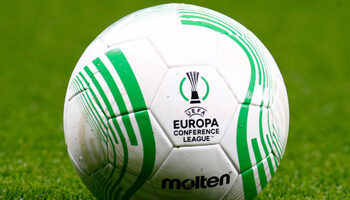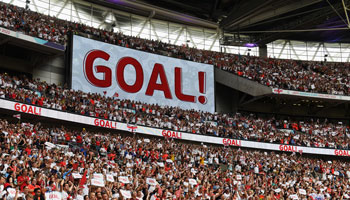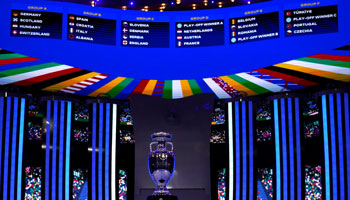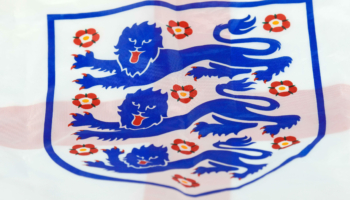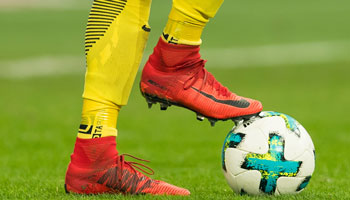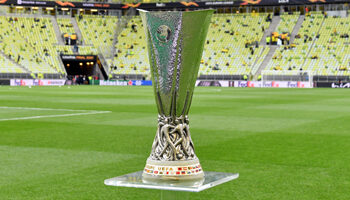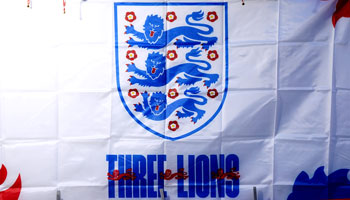The 2021-22 season saw the establishment of a new European club competition: the Europa Conference League.
We’ve broken down how this new tournament works, how it fits into the existing UEFA structure and what sort of teams compete in it.
What is the Europa Conference League?
The Europa Conference League (UECL) is UEFA’s tertiary club football tournament – third in precedence – sitting below the Champions League and Europa League in their structure.
It is intended to give clubs from lower-ranked countries – who are often eliminated in the early qualifying rounds of the other two tournaments – more opportunities to participate in continental competition.
How do you qualify for the Conference League?
Unlike the other two UEFA club competitions, there is no direct qualification to the main tournament’s group stage.
Instead, qualification is split into two paths: the Champions Path – for teams who won their domestic league last season but have been eliminated from one of the other competitions – and the League Path for those who qualified for European competition via a domestic cup or a high league placing.
The qualifying process follows the standard two-legged knockout format, beginning with a 72-team first round.
Over three more rounds, further clubs are added along with those who have advanced from the previous stage.
These teams will have either qualified directly for a later play-off round or have been eliminated from either the Champions League or Europa League qualifiers.
How is the Conference League structured?
The final play-off round contains 44 teams, with the 22 winners being joined by 10 sides eliminated from a parallel play-off round in the Europa League to form a 32-team group stage.
The group structure mirrors that seen in the other two UEFA competitions, with eight groups of four teams playing each other twice over six gameweeks.
The eight group winners advance directly to the Round of 16, while the eight runners-up play off against the eight third-placed teams from the Europa League group stage for a place in the Round of 16.
The remaining 16 teams then contest a standard two-legged knockout bracket leading to the final, just as they would in the Champions League or Europa League.
How much prize money do Conference League teams get?
A total prize pool of €235m is available for the competition, split into four chunks that are allocated differently among the 32 teams that reach the group stage.
Firstly, 40% of the prize money (€94m) is divided evenly among the 32 teams, with each getting just under €3m.
A second block of €94m is performance-based, with wins and draws in the group stage being rewarded, along with a lump sum for each knockout stage reached.
A team reaching the Round of 16 will net a further €600,000, with another €1m on offer at the quarter-final stage. This doubles to €2m for semi-finalists, with the eventual finalists splitting a further €8m: five to the winner and three to the runner-up.
The amount of money on offer is understandably less than in the other competitions. For example, a club that reaches the Champions League group stage will pocket over €15m: more prize money than would be accumulated by winning the Conference League.
However, with many of the teams operating on much smaller budgets than a typical Champions League contender, these figures will still make a huge difference.
The remaining 20% of the prize pool is split evenly between two funds: one allocated based on each club’s performances over the last 10 years and the other proportionate to the TV revenue that their matches earn.
As an added incentive, the winning team will automatically qualify for next season’s Europa League, where there are more lucrative rewards available.
Which teams have qualified for the Conference League?
The Europa Conference League features representatives from a much wider range of nations than the other two tournaments.
The 32 clubs in the 2021-22 Champions League group stage hail from just 15 nations, with more than half (17) representing one of the “big five” leagues.
The Europa League is more diverse, with its 32 group stage teams spread across 20 countries and only one of these – France – having more than two clubs in the tournament.
The Conference League group stage is even more widely spread, covering 26 nations, of which only five have more than one participant.
What calibre of teams are in the Europa Conference League?
For each of the teams who have qualified for the group stage of the three UEFA tournaments in 2021-22, we have looked at their best performances in European competitions over the previous 10 seasons.
Of the 32 clubs in the Champions League, two thirds (24) have reached the knockout stage at least once in the last decade and only two haven’t been in the competition at all during this period.
However, both of these had reached at least the group stage of the Europa League in the last 10 seasons.
In the 2021-22 Europa League group stage, 21 of the 32 clubs have been in a Champions League group during the last decade, with more than half reaching the knockouts.
Of the remaining 11, nine had reached this stage of the tournament previously in the last decade, with the other two having participated in qualifying rounds.
Even in the inaugural Conference League group stage there is only one team out of 32 which is enjoying its first taste of continental competition in at least 10 years: Union Berlin of Germany.
Of the other 31 clubs, 10 have reached a Champions League group in this period while another 13 have done so in the Europa League.
Tottenham Hotspur are the only Conference League team who have qualified for a group stage in all of the last 10 seasons. Basel of Switzerland have contested five Champions League groups in this period, while Roma have done so four times.
This still leaves eight teams – a quarter of the total intake – who have gone at least 10 years without getting past the qualifying rounds of one of these competitions and will be enjoying a rare taste of European competition.
Join bwin today and receive up to £20 money back as a FreeBet if your first wager (3+ selections at odds of 1/2 (1.5) or greater) is a loser! Terms and conditions apply.
